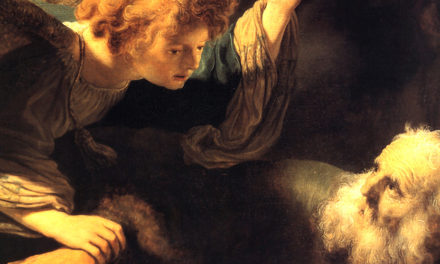The Cultural Mosaic of Anatolia
Anatolia’s history is characterized by remarkable continuity..
The History of the region represents the eldest footsteps of human being (1.8 million years) and about a 10,000 year-old civilization. Anatolia is a melting pot where cultures from Sumer, Babylon and Assyria interacted for centuries with peoples such as the Hatti’s, Hitttite’s and Hourrit’es. The result was a unique Anatolian civilization which has long inspired the thoughts and legends of the West.
Asia Minor
This beautiful land is the Asiatic portion of contemporary Turkey, extending from the Bosporus and Aegean coast, eastward to the borders of the Soviet Union, Iran, and Iraq. The Greeks and Romans used to call western Anatolia “Asia.” Later the name “Asia Minor,” or “Little Asia,” was used to distinguish Anatolia from the greater Asian continent.
An exceptional cultural heritage
The Hittite capital, inscriptions, courts, temples, sculptures and the fascinating remnants of Carians, the Phryg, the Lcyian can be seen only in Turkey. Homer was born on the west coast of Turkey. The world’s oldest known temple was unearthed in Gobeklitepe and the world’s oldest known settlement Catalhoyuk is located in central Anatolia. Two of the world’s seven wonders are in Turkey; The Temple of Artemis and The Halicarnassus Mausoleum. Troy was founded around 3000 BC, and played a major role in the importation of tin, vital for the production of bronze.
Gobeklitepe rewriting the human history
Göbeklitepe is the oldest human-made site of worship yet discovered. It is so old that predates the history of settled human life. It is pre-pottery, pre-writing, pre-everything. Gobeklitepe temple complex predates (9,000 years before) the Pyramids of Giza and (6,000 years before) the Stonehenge. The site draws on questioning and rewriting the theory of human evolution.The astonishing discoveries at Gobeklitepe have long been a talking among academics.
Ionia; Foundations of western philosophy and classical art
Most of the Ionian cities were built around 1050 B.C., geographically between gulf of Smyrna (Izmir) and gulf of Mandalya (Didim). Around 850 B.C. they evaluated a great synthesis from Anatolian cultural aggregation, Aeolia cities, Hittites, Carian, Egypt, Assyria, Phoenicia, Micean and created a unique civilization. They laid the foundations of western philosophy and arts. By the 6th Century BC, the Ionians entered to the areas of architecture, biology, historiography, philosophy and many other branches of culture which permeated the age of Classical Greece. They were the first to plan cities using a grid system. Hellenistic civilization, that exquisite blend of Greek and eastern culture that flourished between the death of Alexander and the emergence of Rome, first took root in Ionian cities..
The Noah’as arc and the city of Prophets
After the flood, its believed that Noah’s Ark landed in Mount Cudi, located between Sanliurfa and Ceylanpınar. ( Re’sulayn ) This mountain has a strange surface; which looks just like the waves of a sea. The mountain is located in the same place as the ancient cities Sogmatar and Suayb. It is also thought that the city was established by Prophet Idris (Enoch in Bible) and the Prophet Noah after the flood.
Prophet Moses’ well and a sign of his staff is located in the ancient city of Soğmatar, currently the area of Sogmatar is known as Yagmurlu Village.
The Jewish history
This is the land where the Prophet Abraham was born, The Noah’s Arc had probably landed and possibly the Garden of Eden was located but for sure one of the eldest synagogues (3rd century BCE) of the world still stands there.. The history of the Jews in Turkey covers the 2,400 years that Jews have lived in what is now Turkey. There have been Jewish communities in Asia Minor since at least the 4th century BCE and many Spanish and Portuguese Jews expelled from Spain were welcomed to the Ottoman Empire (including regions part of modern Turkey) in the late 15th century. Despite emigration during the 20th century, modern day Turkey continues to have a notable and respected Jewish population.
Christianity
There are many references in the Old and New Testament to the sites and the inhabitants of Anatolia. St. Paul was born, lived and traveled extensively along the Asia Minor. St. John is buried near Ephesus, and St. Phillip near Hierapolis. The first church dedicated to Virgin Mary is located in Ephesus. It is strongly believed that she herself lived and died in this vicinity. Besides, Ephesus is where Christianity had turned into a social and political institution. Emperors Constantine, who gave a privileged status to Christianity, and Theodosius, made it the only religion of the realm, implemented these steps in Istanbul. All of the first seven Ecumenical Councils which are recognized both by the Western and Eastern Churches were held in present day Turkey. Of these, the Nicene Creed, declared with the First Council of Nicaea (Iznik) in 325, is of utmost importance and has provided the essential definitions of Christianity.
Cultural identity in modern day Turkey
Turkey has a diverse culture that is a blend of various elements of the Oğuz Turkic, Anatolian, Ottoman (which was itself a continuation of both Greco-Roman and Islamic cultures) and Western culture and traditions, which started with the Westernization of the Ottoman Empire and continues today. This mix originally began as a result of the encounter of Turks and their culture with those of the peoples who were in their path during their migration from Central Asia to the West. As Turkey successfully transformed from the religion-based former Ottoman Empire into a modern nation-state with a very strong separation of state and religion, an increase in the methods of artistic expression followed. During the first years of the republic, the government invested a large amount of resources into fine arts; such as museums, theatres, opera houses and architecture. Diverse historical factors play important roles in defining the modern Turkish identity. Turkish culture is a product of efforts to be a “modern” Western state, while maintaining traditional religious and historical values.
Turkish music and literature form great examples of such a mix of cultural influences, which were a result of the interaction between the Ottoman Empire and the Islamic world along with Europe, thus contributing to a blend of Turkic, Islamic and European traditions in modern-day Turkish music and literary arts.
Turkish literature was heavily influenced by Persian and Arabic literature during most of the Ottoman era, though towards the end of the Ottoman Empire, particularly after the Tanzimat period, the effect of both Turkish folk and European literary traditions became increasingly felt. The mix of cultural influences is dramatized, for example, in the form of the “new symbols the clash and interlacing of cultures” enacted in the works of Orhan Pamuk, winner of the 2006 Nobel Prize in Literature.
Architectural elements found in Turkey are also testaments to the unique mix of traditions that have influenced the region over the centuries. In addition to the traditional Byzantine elements present in numerous parts of Turkey, many artifacts of the later Ottoman architecture, with its exquisite blend of local and Islamic traditions, are to be found throughout the country, as well as in many former territories of the Ottoman Empire.





